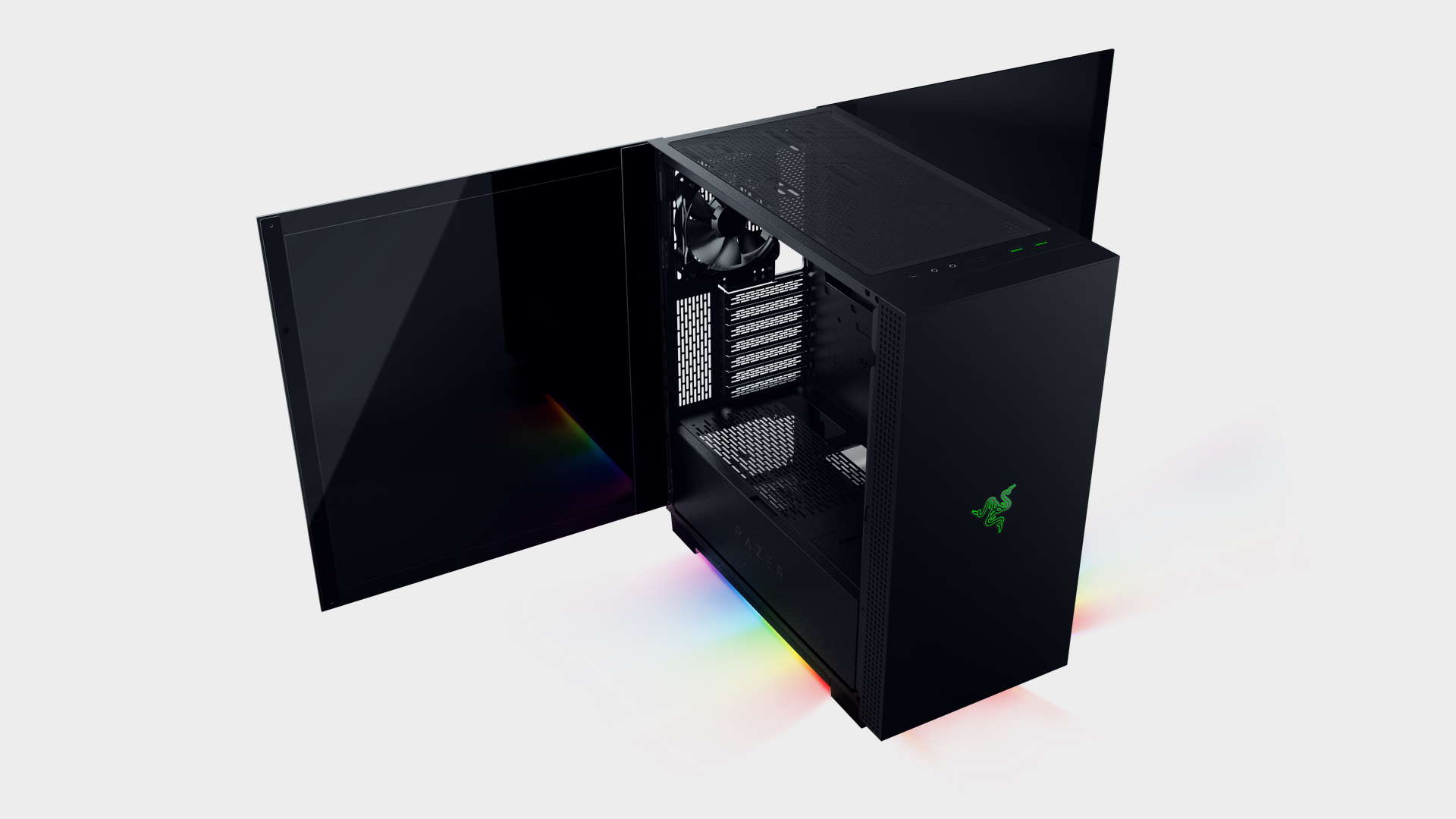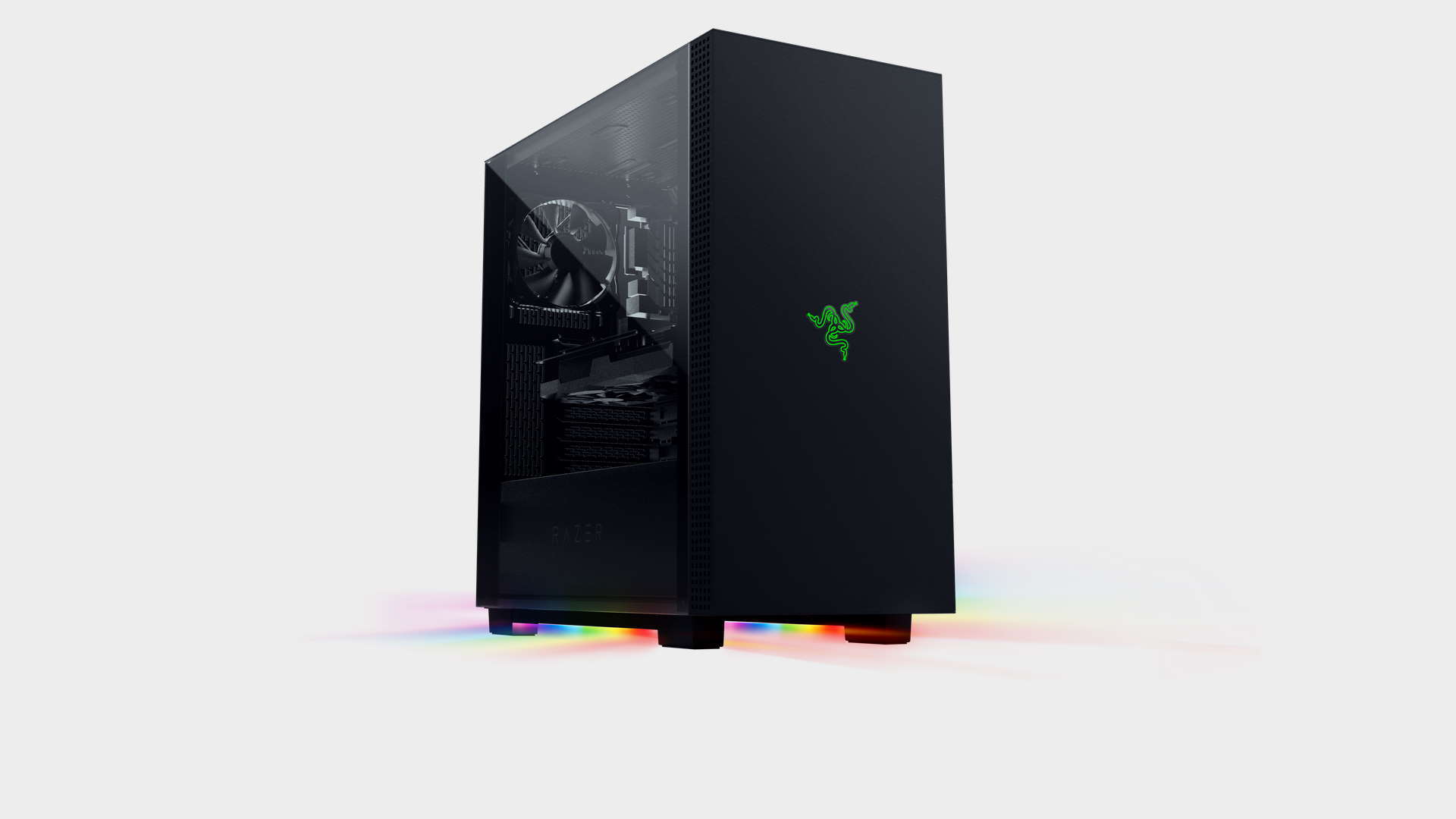Our Verdict
The Razer Tomahawk ATX is a premium case free of garish bling that will appeal to users looking for a more subtle aesthetic.
For
- Classy and understated design
- Tank like build quality
- Razer Chroma ecosystem
Against
- It's on the pricey side
- Cramped PSU area
PC Gamer's got your back
The new Razer Tomahawk ATX chassis is bringing the company's understated style to PC cases. It's a brand which should be familiar to most PC gamers, and though the company might be seen by some as a peripheral manufacturer first and foremost, it’s also popular in the premium laptop market, indeed it holds firm to the top spot in our guide to the best gaming laptops. Smartphones and even financial services make up a part of its portfolio too. Seriously.
Case manufacturing is a logical next step, and while the Tomahawk isn’t the first Razer case, it could be the one that puts Razer alongside other premium case manufacturers. Brand recognition certainly isn’t a problem, but in order to win hearts and minds, it has to be a great product. Is the Razer Tomahawk ATX the case to do it?
Razer has clearly gone for a discreet look. The overall design is almost featureless with the Razer logo being the only addition to an otherwise black box. That's far from a criticism though. While opinions on looks are always subjective, personally I’ll take subtle, quiet, and discreet over Michael Bay Bumblebee's alternate form any day of the week. The focus of the case is its RGB implementation, not the case itself.
Being a Razer product, you get full Chroma RGB support and integration. The case itself has a pair or RGB light strips that run along the bottom of the case on each side. Chroma and the Synapse app might appear to be just another RGB branding and piece of bloatware, but Razer’s RGB ecosystem is arguably the best in the industry. Many games and apps support integration where the RGB can react to things like explosions in real time. Fortnite and Apex Legends are two prominent examples.
There’s also support for many external apps including Discord and Twitch. So, if you’re an RGB fan and want the world to have no doubt about it, Chroma is a solid ecosystem. A unified industry RGB standard would be nice, but that lies somewhere over the rainbow...
But, damn this thing is heavy!
At 13.5 Kg it’s definitely a plump one, but that’s due to its steel construction. Steel has the effect of reducing vibrations and it should help to keep noise levels a bit lower than what you’d get with an equivalent aluminium case. Both side panels are made from tempered glass and have a dark tint that takes the edge off of excessively bright RGB internals. They close magnetically and swing outwards in the ‘suicide door’ direction, which means the hinges are located at the rear.
The Tomahawk comes with only one fan, located at the rear. Razer likely assumes that buyers of this case are using AIO coolers, if not full custom loops that will pull air in from the front of the case. The sides of the front panel are vented to allow this. Just beware that you should add a fan or two to the front of the case if you’re using a regular air cooler.
There's space for more fans or another 240mm radiator at the top of the case. In terms of front connectivity, there are a pair of USB 3.2 Gen 1 ports and a single 3.2 Gen 2 Type-C port. There’s a combo headphone/mic port and a dedicated mic port. The top of the case is vented and is covered with a magnetic filter.

We used an ASRock B550 Taichi Razer Edition motherboard as the basis for our test build. This allowed us to properly test the Chroma RGB settings. The Synapse app recognized the motherboard without any intervention. Our build included an AMD 5950X processor cooled by a 360mm NZXT X73 AIO along with a Corsair AX1000 power supply and an MSI RTX 3060 Ti Gaming X graphics card. There are zero GPU compatibility worries. Any currently available GPU of any height, width or length will fit easily.
The assembly went smoothly. The case management properties are pretty much spot on, however we’d be happy to see just a little more space behind the motherboard tray for cable management. The Corsair AX1000 PSU has stiff cables and a couple extra mm would have been ideal, but we got there in the end. The PSU area is isolated from the rest of the system but some care needs to be taken when you install a PSU. The cables may clash with the 3.5” drive bay module which means it needs to be moved. It can be, but if you have a radiator installed in the front, you may face an issue with stiff cables or a very long PSU. To solve this, make sure you install the PSU first and adjust the drive cage before installing a radiator. Consider that a lesson learned.
The finished build is thing of beauty, however. The tempered glass windows really show off RGB at its best without feeling like you're looking into the sun if you're in a dark room. It looks really classy and is a build I would be happy to claim as my own. With the 360mm rad in the front, temperatures and airflow were never an issue. The single included fan on the back was a bit louder at its default setting than I’d like but that can easily be solved via motherboard control.

The Tomahawk can definitely be considered a premium case and at $200 USD it's priced accordingly. That's on the expensive side but it's not bad compared to the likes of the Corsair 500D or Cooler Master SL600M. It will appeal to users who aren’t impressed by snarling beasts, Gundam, and/or mechwarriors. These users are likely to appreciate a bit of understated class ahead of something garish or gaudy straight out of an 80’s disco (not that there’s anything wrong with 80’s discos).
A sturdy, solid and subtly attractive design is exactly what many people will love about it. If you’re already invested into the Razer ecosystem, this could be your next case. In terms of its functionality or design it doesn’t reinvent the wheel but then at the end of the day, it’s a PC case and it doesn’t need to. We’re reminded of the Tomahawk Elite with its inverted layout and hydraulic gullwing doors. While it looked amazing on the 2019 trade show floors it took things a step too far for mass appeal. It’s likely that feedback from the Elite was part of the reason that led Razer to revert to a tried and true traditional design formula.
The Razer Tomahawk will appeal to many, but not all. If you’re after something cheap but effective, there are dozens of brands with dozens of models on the market but very few offer the combination of understated class and build quality to go along with Razer’s RGB integration capabilities. If you don’t mind paying a bit of a price premium, the Tomahawk ATX is a case you’ll be happy to have on your desk.
The Razer Tomahawk ATX is a premium case free of garish bling that will appeal to users looking for a more subtle aesthetic.

Chris' gaming experiences go back to the mid-nineties when he conned his parents into buying an 'educational PC' that was conveniently overpowered to play Doom and Tie Fighter. He developed a love of extreme overclocking that destroyed his savings despite the cheaper hardware on offer via his job at a PC store. To afford more LN2 he began moonlighting as a reviewer for VR-Zone before jumping the fence to work for MSI Australia. Since then, he's gone back to journalism, enthusiastically reviewing the latest and greatest components for PC & Tech Authority, PC Powerplay and currently Australian Personal Computer magazine and PC Gamer. Chris still puts far too many hours into Borderlands 3, always striving to become a more efficient killer.


